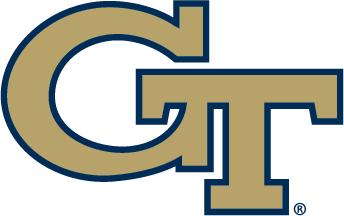TAXSLAYER BOWL TICKETS AND TRAVEL INFORMATION
OFFICIAL GEORGIA TECH BOWL GUIDES
Dec. 23, 2016
Matt Winkeljohn | The Good Word
Building his dream in a cocoon for years, Eason Fromayan kept hitting the weights to get stronger and working out to develop his footwork, hand play and quickness so that, with one game left in a college football career that’s blossomed, he’s ready to put all that work to work and fly on Sundays . . . in NASCAR.
After Georgia Tech plays Kentucky on Dec. 31 in the TaxSlayer Bowl, the tall tackle with hang up his cleats and shelve his shoulder pads, leaving behind a final season of eligibility to hop walls, jack up race cars, change their tires or gas them up.
Working in pit crews has become more of a business for big, fast people and to Fromayan “it’s a full-blown thing. My interest and abilities kind of connect.”
Even as a wee lad, the now 6-4, 285-pounder was mesmerized by cars going round and round really fast. This remains a stock passion, its roots immortalized in photos in his Alpharetta family home of him dressed up for Halloween as one of NASCAR’s most famous drivers, Jeff Gordon.
So, of course he’s going to pack up that fresh Georgia Tech business administration degree, resume training and head to NASCAR pit crew training camp next summer.
What, are you surprised?
“I’ve always been a NASCAR fan,” Fromayan said matter of factly. “I’ve been to way more NASCAR races than football games . . . I guess it’s unusual to cut a career early, but I graduated and . . . I have an opportunity to better my situation.”
Meaning: get paid to do what he truly loves.
Salaries are not made public for NASCAR pit crews, but several suggestions in media that crew members can expect to earn $50,000-$100,000 per season just off the races themselves. Often, these men have additional jobs beyond race-day responsibilities with their teams.
There may be more money to be made in the NFL, but football’s Fromayan’s mistress.
He redshirted in 2013 at TCU, where his father, Edwin, was a four-year basketball letter winner, and did not see game action again after transferring to Tech in ’14 to be closer to his family.
After playing in all 12 games last season as a reserve, he started nine games for the Jackets in 2016. While again playing in every game, he got way better.
“I do think he saw a lot more playing time than he anticipated,” said Georgia Tech offensive line coach Mike Sewak. “[But] I think he has bigger aspirations than playing in the NFL, which I think he thinks is a long shot.”
One day, Fromayan hopes to turn another long shot into reality. His aim? “Make enough money to race,” he said. “The Rolex 24 [hour] in Daytona; that would be my ultimate goal. It’s four, five or six drivers to a car.”
The chase will begin next summer in pit crew training camp. There are several around the country and NASCAR teams visit with privately-coached prospects, who work out much like football players.
“They have a real formal process,” Fromayan said. “You can try out, make the cut, and begin the development process. It’s really similar to football.
“A lot of explosive stuff, bench press, 40-yard dash, a couple NASCAR specific drills, carrying tires, jacks . . . Eventually it evolves into like a signing day.”
Time has become all the more important in NASCAR, where an extra second in a pit stop can win a race.
Tires weigh about 70 pounds and they’re big. Jacks can weigh about 35 pounds and they’re awkward. Pit men need to be able to not only handle them as if they were as light as hedge trimmers but move with alacrity and even sometimes jump out of the way of other cars or flying tools and gear.
Gas men have to be tall, stand upright and ram the can into the car firmly so that fuel can more efficiently be gunned into tanks.
Like football, working in the pits is fast, physical and loud with down times between action.
Richie Williams knows that from working as a jack man with the Chip Ganassi Racing team with Felix Sebates.
After his football career wound down following more than three seasons in the Canadian Football League, former Appalachian State teammate Mike Metcalf — who was already in NASCAR — put Williams in touch with Phil Horton of Drive for Diversity.
That arm of NASCAR, designed to attract minorities and females to the sport in all roles, helped Williams transition into a career field that is different from football in ways but in others, not so much.
“Just the team aspect of it . . . the guys on your pit crew, you see them more than your family during the season,” Williams said of similarities to football. “It’s a tight-knit family.
“Also, there’s the competitive aspect. Jumping over the [protective] wall gets your adrenaline going just like going on the field and you’re competing against other top athletes.”
NASCAR (and all racing) is very much a sport and so is getting into it.
Some 20 years ago, Andy Papathanassiou, a former Stanford football player, was hired by Hendricks Motorsports to hire and train Gordon’s pit crews. Former college and pro athletes have become increasingly common in the pits since.
“A lot of teams are going to combine-style testing. [Hendricks] was probably first,” Williams said of the way NASCAR teams search for pit crew personnel. “They actually have a team of recruiters that goes out and looks for college athletes that are not going to play at the next level.”
Concussions with the Minnesota Vikings ended the NFL career of former Wake Forest linebacker Dion Williams in 2004. He wound up in the pits after his agent suggested NASCAR as a way to keep his athletic career alive.
He tried out and landed a job with Hendricks.
“They like the guy that is girthy that can move,” Dion Williams told The Sporting News. “They like the fact that I have great hand-eye coordination because I need to get that tire on in under a second. I did very well [in tryouts] and that’s how they decided who they were going to bring back.”
Most NASCAR teams now have elite training facilities dedicated to their crews, like the one Hendricks built with a 75-yard turf field, track and weight room.
Dion Williams was mostly a reserve for the Demon Deacons after playing for Lakeside High School in DeKalb County before that. He knew little about NASCAR.
Fromayan started nine games in college. He’s long relished NASCAR and upon meeting Dion Williams in the pits last year when the circuit stopped at Atlanta Motor Speedway, he started really thinking.
A conversation about Orange Bowl rings became a conference about livelihoods.
“He’s kind of a poster child for coming from football and moving into this,” Fromayan said.
Tech coaches might not have predicted that Fromayan would choose this path but they’re not surprised.
“He’s geared up for it. He has a plan for it,” Sewak said. “Most of the kids here at Georgia Tech, when they have a plan, they follow through with it. They’re not whimsical. He thinks he can make a lot of money in NASCAR. I’ll enjoy watching him on Sundays.”
The plan may take a while.
Fromayan worked as a monitor last summer at a small track in Dawsonville, Ga., yet he has a lot to learn and prove. He’s about to give it his best shot.
The Daytona Speedway is one of the few NASCAR tracks in the Southeast yet to be checked off the bucket list and it’ll be the first stop of his post-football career.
He wants to end up there — behind the wheel. But first, he’ll visit after the TaxSlayer Bowl before aiming for the pits to pave a professional return.
“I’ll start training immediately,” Fromayan said. “Recruiting starts [right away] and the mini-camps start in the summer. There are a couple groups. You start in minor leagues, lower-level series, and work your way up . . .
“I hope to one day make enough money to race . . . It’d be a heck of a story if it works out.”
Really, this is already an amazing tale.









